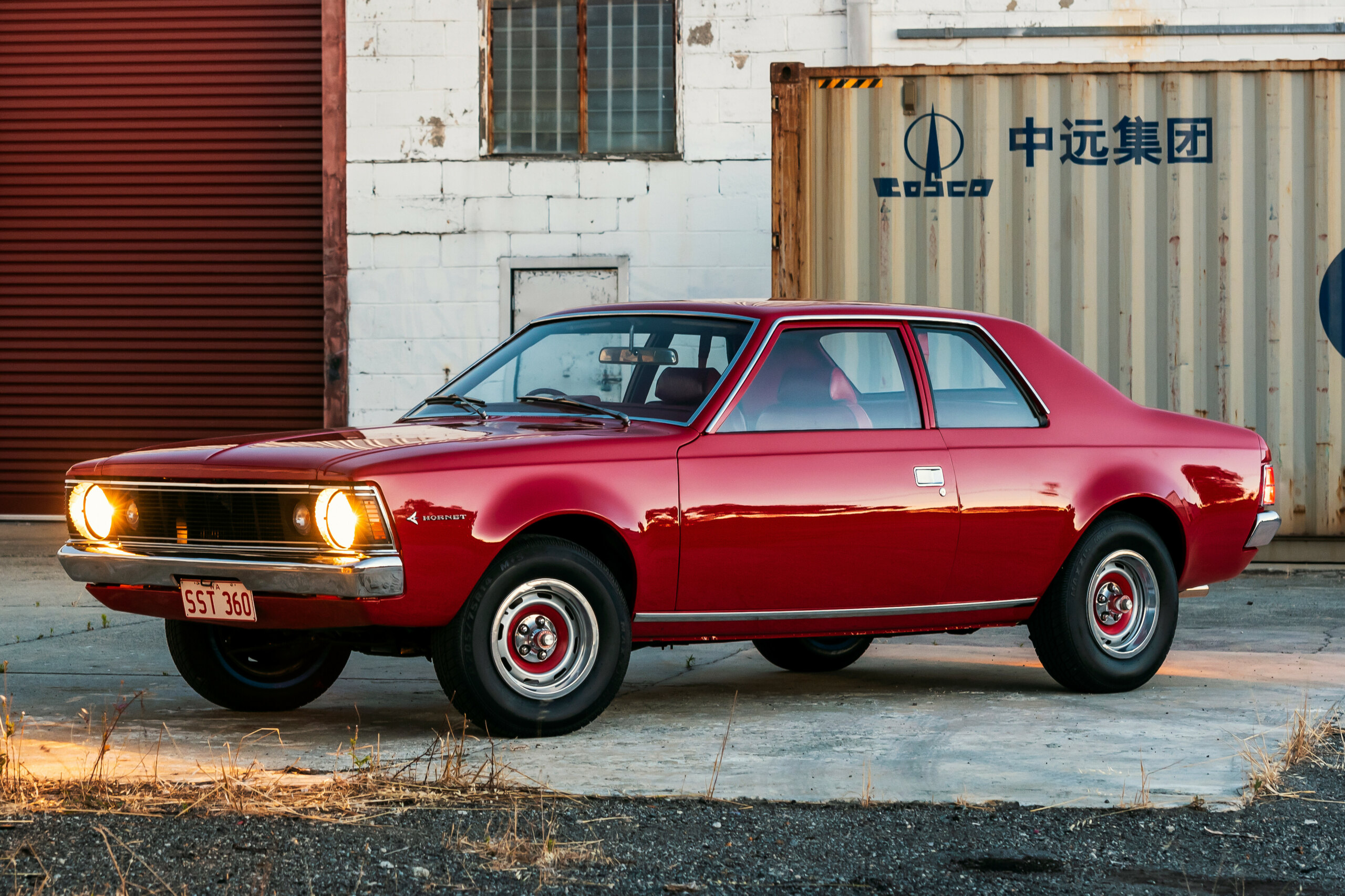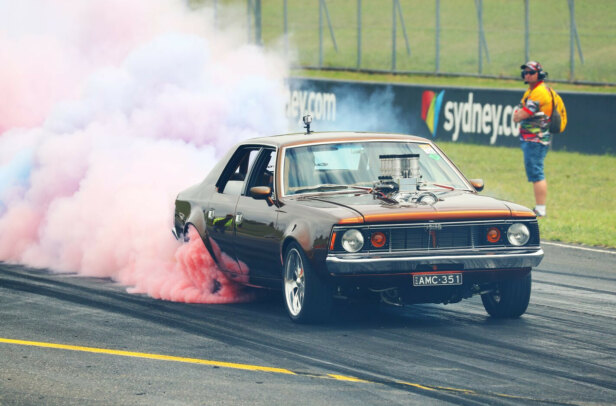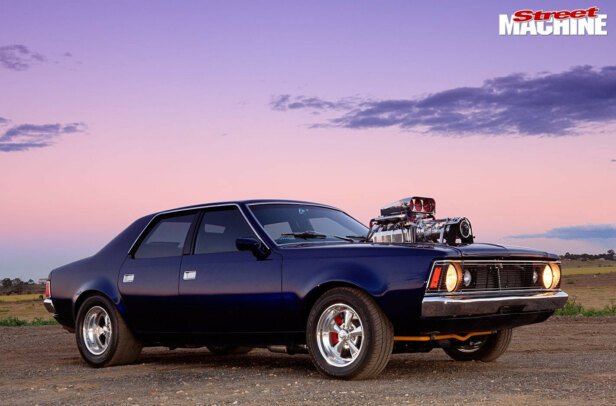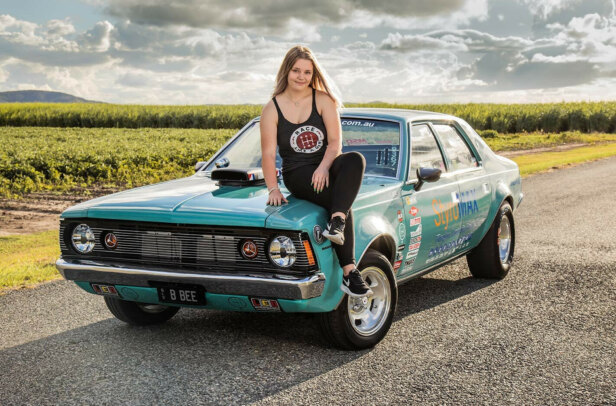A 1970 Rambler Hornet two-door sedan might seem like an odd choice for a young bloke to pick as his first car, but when your dad has a beautifully restored 1966 Rambler Rogue coupe hiding a 401 under the bonnet, it’s pretty clear where the inspiration came from. While Charlie Coates’s six-banger doesn’t run mid-12s like his old man’s Rambler, there’s a plan afoot, and it won’t be long before he’s giving Dad a run for his money.
First published in the June 2021 issue of Street Machine
Why a Rambler Hornet?
For as long as I remember, my dad has owned a Rambler. I developed a love for AMCs, particularly Hornets, and spotted one for sale on the internet located in Maple Lake, Minnesota. We purchased it sight-unseen on 4 March 2016 and paid US$3100 for it.
It must have been tough waiting for it to arrive and not really knowing what you were in for?
Well, it was a risk to say the least, buying a car from the other side of the world based on a handful of poor-quality photos and trusting a bloke you’ve never met. We were eager to get started even before it arrived, so we picked up RHD steering and suspension from a wrecked Hornet and Dad showed me how to sandblast and paint, then away I went. Then, after a month at sea, we welcomed the Hornet into its new home and were happy to see that it had stood up better than expected. Other than the vinyl floor coverings, which we replaced, all of the interior was well cared for, and, unlike the Aussie Hornets, the dash had no sun damage or cracking.
It snows a lot in Minnesota, though. Was it rusty?
The body actually proved to be pretty good. The previous owner had stored it in a barn during the winter, so there was minimal rust for a car of that era; less than we expected. There were a few minor rust sections on the rear wheelarches and top of the front guards, but the rear valance had rusted right through. With the help of Tim Triscari and a nine-inch grinder, we removed the rusty one and welded in another valance from a donor Hornet.
You did a nice job on the RHD conversion.
We cut two sections out of the firewall, the brake reinforcement plate and the heater motor section, then welded in the RHD parts from the donor car. The Hornet’s dash was pretty easy to work with. The symmetrical design allowed us to remove the glovebox and driver’s side fascia and then mount the Australian dash fascias.
So you handled a lot of the bodywork at home?
Yep, that was the fun part [insert sarcasm], stripping paint and scraping away old underbody protection for hours on end in the garage. It was a long few months, and I spent many a weekend absolutely filthy and smelling of paint stripper, but it was only up from there. With some help from my pop, Peter Turner, who has a long history of restoring cars, we got the bodywork as good as we could before transporting it to Grant Graham at G&T Restorations in Mount Barker to do the last blocking to get it perfect.
You must have suddenly had a lot of free time on your hands!
Yes and no. Even without the car, there was quite a bit to do. We got busy working on upgrading the AMC 20 diff and tidying up the 232 six-cylinder motor. We always had the intention of replacing the motor with an AMC 360 eventually, so the motor was left alone. We replaced the rear main seal, then resprayed the rocker cover and block in Caravelle Blue. We replaced the fuel pump, water pump and installed a reconditioned two-barrel Autolite 2100 carb. We also reconditioned and detailed the dash fascia. By the time the car arrived back home, the motor, front suspension and dash were lined up and ready to go in.
Who did the paint on the car? It looks pretty nice.
We took the car to Carlisle TAFE, where an apprentice sprayed it in the original Matador Red, but in two-pack. It was just when we had got it back from TAFE that we went into COVID lockdown, and that’s when progress stepped up another gear.
I hear you’re already a bit bored with the six. What are the plans?
Eventually, we’re going to replace the 232 with a 360. It will have Wiseco forged pistons, Edelbrock alloy heads, Lunati cam and Edelbrock Pro-Flo 4 EFI. We’ll change to a 727 Torqueflite gearbox and add an LSD and one-piece axles to the diff.
It must be pretty cool having a car that no other P-plater has, and to have done so much work on it yourself?
I bought the car when I was 14 years old after saving up for a few years, and from then have learnt how to sandblast, spray-paint, solder, weld and a whole bunch of other skills. It was a big four years, full of ups and downs, but it was a ride I was ready for. I want to give a massive thanks to my dad, Simon, for embarking on and sticking with this massive project with me. I can’t express how grateful I am.
CHARLIE COATES
1970 RAMBLER HORNET
| Paint: | Matador Red |
|---|---|
| donk | |
| Type: | AMC 232ci |
| Inlet: | Stock |
| Carb: | Autolite 2100 two-barrel |
| Exhaust: | Single 2.25in, Flowmaster Super 44 muffler |
| shift | |
| ’Box: | BorgWarner 35 |
| Diff: | AMC 20, 3.15:1 gears |
| BENEATH | |
| Front end: | Stock |
| Steering: | Saginaw power steering |
| Brakes: | Kelsey-Hayes 11in discs (f), 10in drums (r) |
| ROLLing stock | |
| Rims: | AMC Rallye 14×6 (f & r) |
| Rubber: | Maxxis MA-1 205/75R14 (f & r) |




Comments